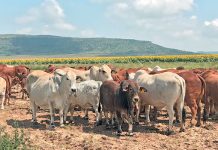The increase in the prime interest rate to 13% at the beginning of June has created uncertainty about the possibility of further increases in the near future. Chances are good that rates will remain at the current level or even decrease slightly towards 2008.
Inflation outlook
The inflation rate breached the top of the 3% to 6% Reserve Bank target range in April 2007 – after 44 months of below 6% inflation. The consumer price index (CPIX), the inflation rate without interest on home loans, which the Reserve Bank uses as a target, reached 6,3%.
There was a sharp increase in fuel and food prices, as well as firm growth in the cost of housing services. The production price index (PPI), which measures inflation at factory level, increased to 9,5% in February, 10,3% in March and 11,1% in April 2007. All producer prices increased with higher local than imported inflation. Farm-level producer prices increased to 18,1%, manufactured product prices to 12,6% and consumer prices to 8,6%. If you compare food inflation at various levels it’s clear that the increase in food prices on farm and PPI level is still higher than on CPIX level. Higher retail food prices are therefore still on the charts.
The oil price was the major driver of higher inflation. While it fell in 2006 to a 20-month low in January 2007, it increased to a new high of per barrel in April 2007. International oil prices are kept at high levels by uncertainty about the geopolitical situation and supply problems in various countries. Chances of lower oil prices seem slim, and the biofuels industry in the US will not influence global oil prices significantly in the short term.
Food prices will remain high and higher grain prices will impact on the price of livestock products. Wage demands have accelerated in the past few months, with government employees asking for a 12% increase which dropped to 9% (at time of going to print). The Reserve Bank estimates that CPIX will remain above 6% for the second quarter of 2007, dip below it in the third quarter and move to 6,3% in the first quarter of 2008. This is worse than the Reserve Bank’s previous inflation proposed and led to a rise in the repo rate of 0,5%.
The probability of a quick return to previous inflation levels remains slim as the inflation rate only barely exceeded the 6% upper limit and will probably move within the target range. However, if inflation stays below 6,3%, as estimated by the Reserve Bank, we can expect that it will leave interest rates at the current level for the rest of 2007. If oil prices settle down again we may even see a slight decrease in rates by the last quarter of 2007.
Consumer demand
There was a slight drop in consumer expenditure in the first quarter of 2007 – although expenditure increased by 10,1% year-on-year in March. Consumer expenditure was kept high by the sharp increase in credit uptake by the consumer. In April 2007, 27,4% more money was loaned to the private sector by banks than in April 2006. Higher levels of employment, real disposable income and improved balance sheets as property prices increased, improved consumers’ balance sheets and enabled them to take up higher loans.
Despite the 0,5% increase in interest rates, consumers can still manage their total debt. However, the structure of the total debt may soon become a problem. At the end of 2006, many companies issued credit cards and there was a big drive to get as much credit approved as possible before the new credit act came into effect.
Many consumers will soon face the dilemma of forced repayment on credit card debt. This will have a negative effect on the money consumers have available for other purposes. Non-discretionary payments on, for example, fuel, education, medical services and other administered prices will also increase sharply. All these will impact negatively on total consumer demand. As usual, the main impact will be on durable and semi-durable goods and expenditure on basic foodstuffs may even increase slightly.
Outlook for farmers
Higher interest rates will put more pressure on producers’ profitability. The outlook for agricultural product prices remains good; there is little sign of a downturn in demand and in many industries products are in short supply. The higher grain prices have shifted the whole grain/livestock supply situation to a new level, and farmers can expect that producer prices will remain at current levels for the rest of the year. Higher inflation will, however, mean that profitability remains under pressure. Technical and economic efficiency are still crucial for farmers. Dr Koos Coetzee is an agricultural economist at the MPO. All opinions are his own.





